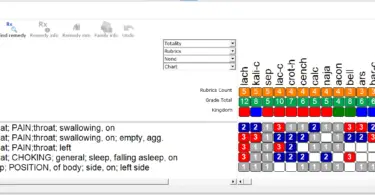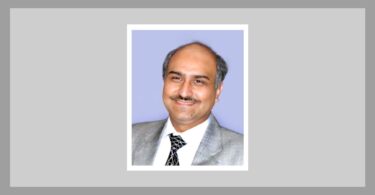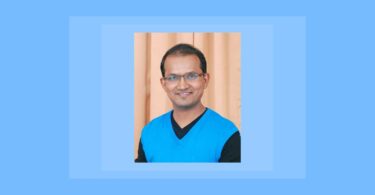Homeopaths do recognize that our art and science of Homeopathy is grounded in fundamental laws of nature and when we function within the parameters of these laws, we can tackle a whole range of human conditions by using remedies prepared by the method laid down by Hahnemann1.
In general, people find it hard to understand remedies because they simply do not get how the process of dilution and succussion can create a remedy out of medicinal substances. To make sense of our principles, philosophy and paradigm, we homeopaths have tried to understand the remedies as energy signatures that carry in them healing potential that is released by the very method of preparation, i.e. dilution and succussion.
The lactose pills are simply carriers of this energy signature and in fact, the more the dilution, meaning the lesser the material medicinal substance, the stronger the energy signature.
Now what would happen if we used energy in its pure form – would we need the process of dilution and succussion? What type of energy would best yield to being used in its pure form? Do any and all types of energy have a healing action?
For example, can someone touch electricity (a pure form of electrical energy) and experience healing? When there are more questions than answers in our mind, it is a good time to seek out people who live and breathe with the purpose of solving riddles, finding answers to questions that can be as puzzling as the existential questions. One such person is Dr. Rajan Sankaran2 – and he needs no introduction, at least for the readers of HPATHY! You guessed right, I asked him the questions….
VS: We do know that dilution and succussion releases healing energy. Can sources of pure energy be used for healing as we use homeopathic remedies?
RS: With my research team, I have been working on this subject for a long time. Amongst the various forms of energy, one that yields beautifully is music – a form of sound energy.
VS: Can music be used for healing?
RS: Yes. I have explored the healing potential of classical music, by conducting provings of the ragas from classical Hindustani music3. The proving outcome revealed to me that each raga produces a certain effect that is different from the effect of other ragas.
But can a random raga help, or, is there a possibility of matching a person’s emotional state with the raga and have him listen to a specific raga that might lead to a therapeutic experience? To answer this question, our research team looked into, “Like cures like”1 , a principle based on matching of frequencies.
Ill-matched frequencies lead to disharmony. Well-matched frequencies express harmony. My research of over three decades is based on the paradigm that within us, a tune is playing, that I have named as “the other song”4. This tune, an energy pattern that we borrow from the natural world, is the loudest when we are unwell.
When we find an energy pattern that is a match for the ‘other song’ playing within us, we experience healing, and in the current context, I am exploring Hindustani classical music ragas as a source of matching energy patterns.
VS: What are ragas? How do you find an energy pattern from the ragas that matches our emotional state?
RS: A raga is an energetic expression of a certain musical note in a certain harmonic pattern. Differences in patterns differentiates one raga from the other. Based on my research, I am proposing that a specific type of person must have an affinity for a specific type of raga. When a raga is selected per the principle, like cures like, this specific raga is able to elicit a healing response. You can find matching ragas in my Raga App.
VS: How is the healing effect of ragas different from the healing effects of mantras? Mantras are in Sanskrit language. They have deep meanings and they serve a specific purpose. Can mantras be prescribed just like ragas?
RS: Ragas and mantras are fundamentally different. Mantras do have a universal healing effect because they cross the limit of individuality. The spiritual effect of the mantras is undifferentiated and non-specific and they address the illness common to the entire humanity – which is identifying oneself as individual body-mind. Mantras help transcend this limit and help us connect with the universal spirit.
Ragas, or melodies of the Indian classical music, are wordless, pure sounds. Unlike mantras, ragas on the other hand, have an individual effect. This means that ragas address the innate pattern of the individual. That is why different melodies or ragas match different states of people.
Ragas help heal our individual patterns of expressing disease states and they begin the healing process by first allowing the mind to become silent and meditative. When a raga is rendered in a melodious style, it cancels out all the chatter and noises and allows the mind to get focused. A raga can even create a trance state.
VS: How did you create the Raga App?
RS: During the pandemic lockdown, for 26 days, I gathered volunteers from around the world over zoom and sang to them a raga each day. I sang solo at a particular speed or tempo, with just a one string instrument.
The listeners wrote down their response at the physical, emotional, imagery and sensation levels, and if they experienced speed, vibration, thermal sensitivity, perception of colors etc. The common theme emerging from these responses was considered as the essence of the raga. The result of this research is distilled in my Raga App.
VS: Please describe your Raga App.
RS: The Raga App includes 26 of the most well-known ragas. Simple questions spread over a few frames allow you to identify your emotions and choose a raga that matches your emotional state. You listen to the raga singing for the next uninterrupted fifteen minutes or so, you get to rate it and click on the effect the raga has on you. You can also send a detailed feed-back to the email address provided with the App.
VS: What feed-back has come in so far?
RS: Some people had brief relief, but many others experienced lasting improvement and deeper healing after listening to ragas that matched their emotional state.
VS: What is coming next?
RS: My further research is aimed to identify the healing effects of more ragas.
Ragas, as pure music, is an expression of sound energy in its pure form. Ragas do not have coherent words. They do not engage the mind in deciphering any meaning.
Mind is free to experience the sound of the ragas as energy signature. When chosen per ‘like cures like’ the energy signature of the raga can mirror the innate energy pattern of an individual and initiate healing.
If we see disease and healing as a dynamic process, then, freedom from disease must come from deploying energy as a healing agent. Energy cannot have a better representation than music. Music cannot have a better representation than a raga, which is pure energy. Energy medicine is the future of medicine, and Raga therapy is a step in that direction.
Ragas, as pure representatives of sound energy, do stand out amidst all other forms of energy as the ones that have the potential for being used for a wide range of emotional states and sufferings of various nature. They have within their capacity the power of evoking emotions and mind states. They can also mollify agitated emotions, mind states.
VS: The cutting edge research of Dr Sankaran and his team is exploring the possibility of healing various manifestations of diseases using ragas selected on the basis of fundamental law of Homeopathy, “Like cures like”. Surely, we have much to look forward to and the icing on the cake is that the results are for everyone’s wellbeing.
NOTE: The Raga App is free for download.
Link for Android phones and iOS
https://play.google.com/store/apps/details?id=com.unthinkable.raga&hl=en_IN&gl=US
Link for Apple phones:
https://apps.apple.com/us/app/raga-therapy/id1553586373
End notes:
- The organon of the medical art, a new system of physic by Hahnemann, S. 1833. 1833Publisher, W.F Wakeman, Dublin.
- https://www.theothersong.com
- Homeopathic healing with music, The Oxford handbook of medical ethnomusicology, 2011
- Sankaran, R. The substance of Homeopathy. Homeopathic Medical Publishers, India. 2004.
Additional resources:







I just downloaded the Ragas and listened to several. I think they’re a really good idea and the app worked well. It’s probably just me but I didn’t like listening to a man’s voice singing. Must a Raga include a human voice? I’d love to hear this music as an instrumental. The instrument being played in the Ragas (a sitar?) was really beautiful – I could listen to it for hours.